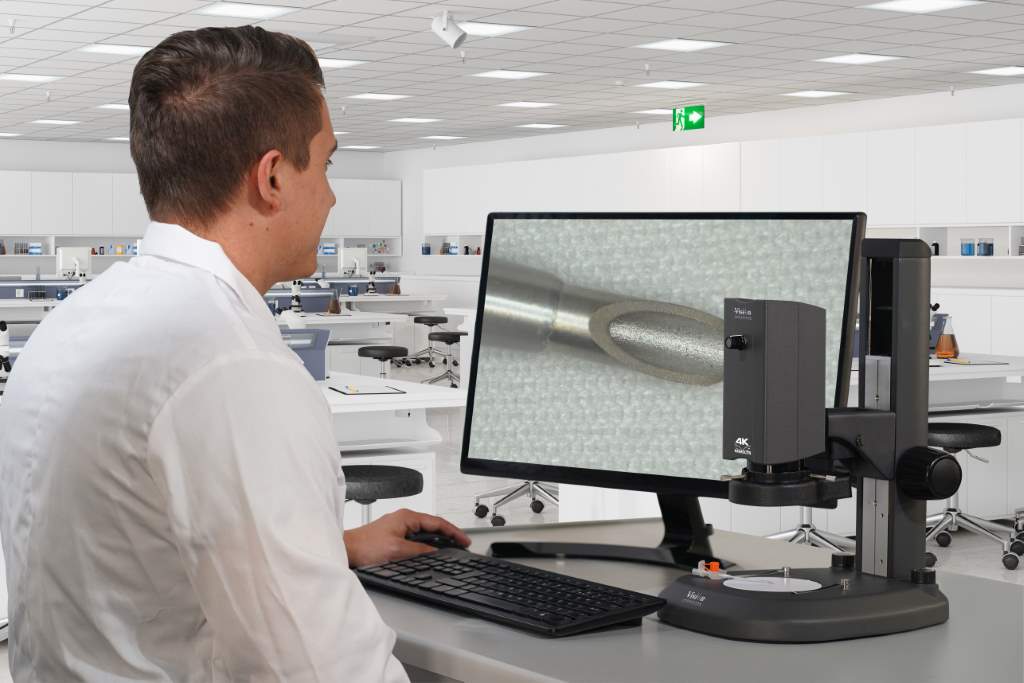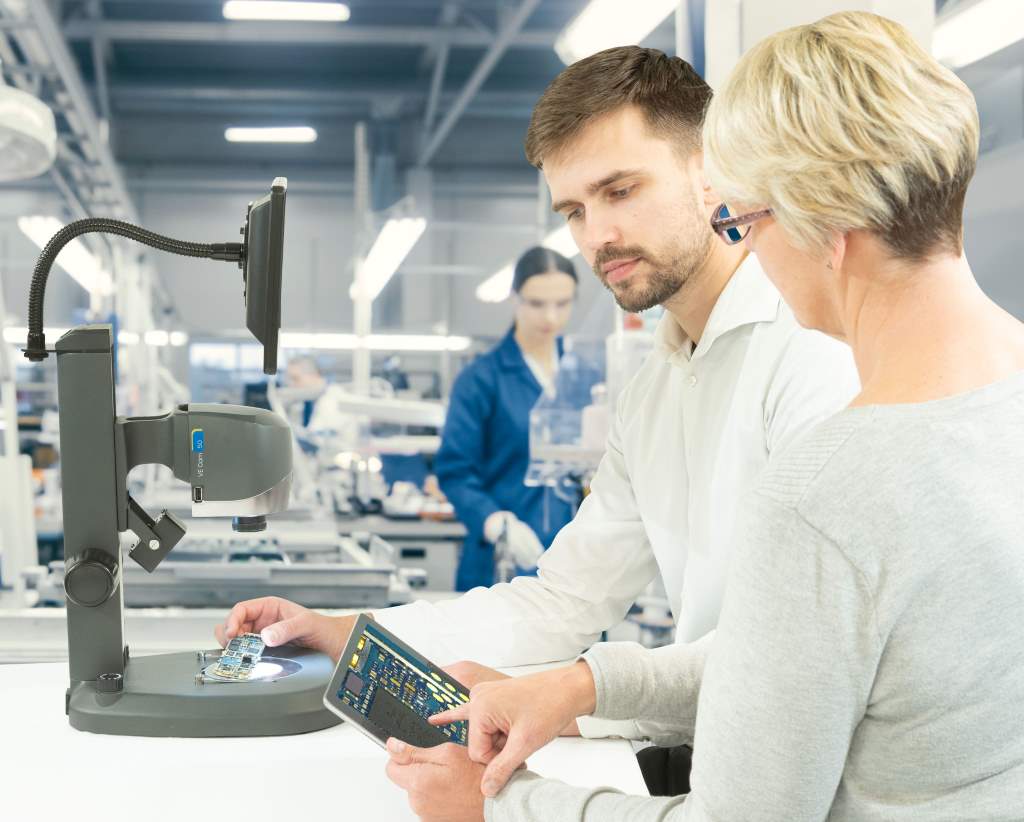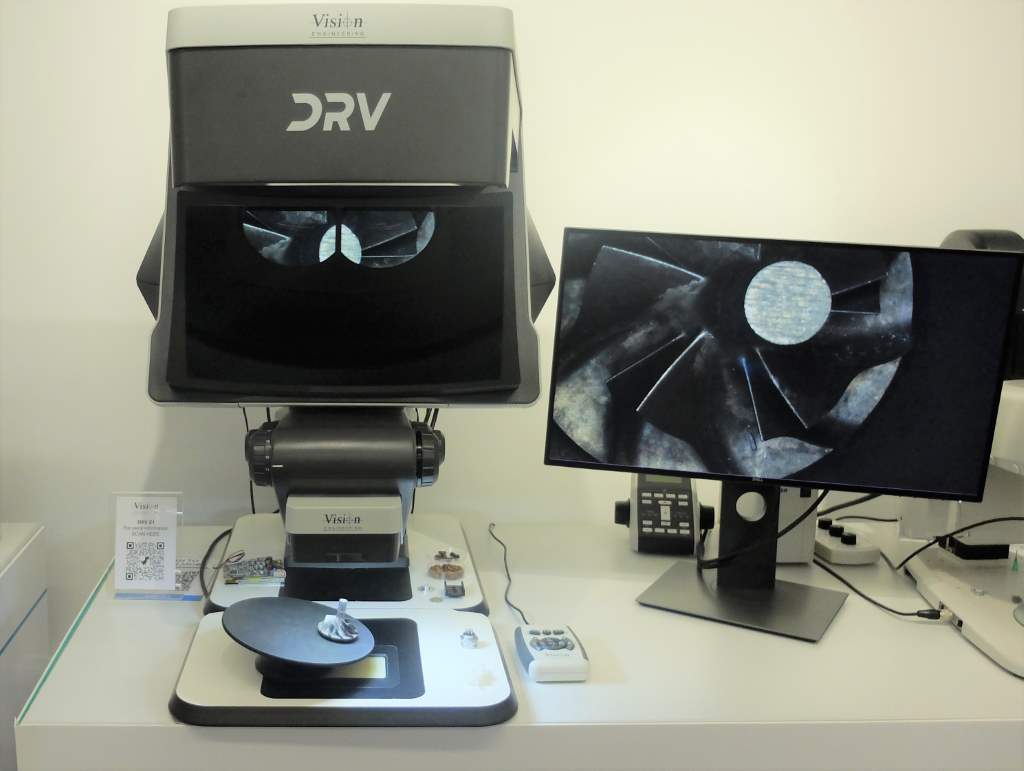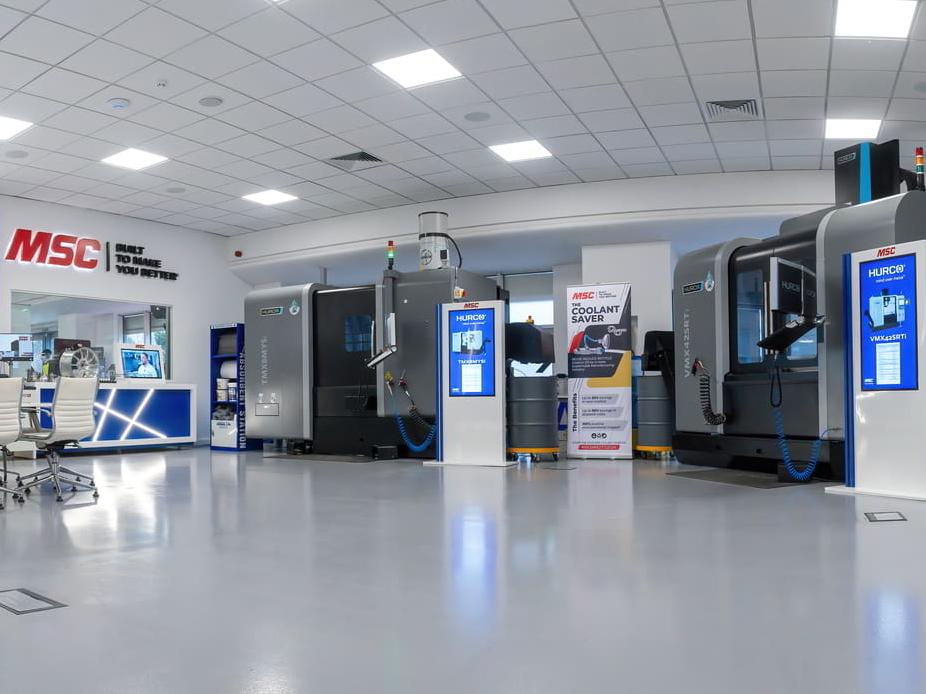New depth to visual inspection

Widely used for inspection and metrology purposes in sectors such as automotive, aerospace, electronics and medical, Vision Engineering’s optical and digital visual microscopy systems have proved to be a UK manufacturing success thanks in part to their innovative and ergonomic design. Ed Hill visited its headquarters in Send, Surrey to hear about the latest technical developments.
The old adage ‘time is money’ applies as much to manufacturing as it does to any other area of life and that is in part one of the motivations behind Vision Engineering’s latest product and technology developments.
Well known as a leading designer and manufacturer of high-quality visual instrumentation equipment, the 64-year-old UK company – which won a Queen’s Award for Enterprise as recently as 2020 for its high-tech ergonomic optical inspection microscope the Lynx EVO – has been expanding its range of digital microscopes to offer both a simpler and further streamlined inspection process for manufacturers, and to support new ways of collaborative working post-pandemic.
The company, which exports 90% of its products – including to some of the most recognisable global technology brands – is also adapting its technology for the age of industry trends such as the IIOT and Industry 4.0.
“We want to meet the requirements of different customers with different microscopy needs,” Steve Sanderson, international product manager at Vision Engineering begins. “So, on the digital range of our products we introduced the EVO CAM II which is very popular, with numerous functions to offer a very wide and flexible range of inspection, image and measurement solutions in one system.

“However, some customers wanted a more straightforward, high-quality system with simpler functionality that is quick and easy to use, and at a price point that reflects that.”
Hence the introduction of Vision’s VE CAM, a slimmed down product, designed principally for visual inspection or manufacturing quality control. The VE CAM is a compact, easily adaptable inspection device that can be placed on the shopfloor as well as the inspection room and quickly mastered by operators.
“It’s very much a tool for a job,” Mr Sanderson continues. “It’s intended for customers who want an inspection system that is simple and fast for the inspection tasks they need. If you can resolve a quality issue faster, the less impact it has on production and when prototyping it reduces your time to get a product to market. Inspection is a necessary part of the manufacturing process but if we can make devices that are enhanced, quicker and easier to use then all the better, whether that’s faster or more accurately.”
A precise perspective
The drive for quickly identifiable and improved accuracy is also why Vision has developed its first digital 4K microscope, the Makrolite 4K.
“It was a development we felt our customers needed and adds something extra to the products we already have on the market,” Mr Sanderson explains. “It's not just the higher resolution that brings benefits when using 4K; it allows for better control when it comes to highlighting light and dark in shadowy areas of the image.
“For example, black plastic components contain surfaces where it is very difficult to get a good image, but with 4K you can see more detail because the camera handles the contrast better in those areas, showing more detail. This is an important development; it's not just simply about producing a sharper image.”
Swifter inspection is another key feature of Vision’s latest DeepFocus 1 microscope. Paired with Zeiss micro-mirror array (MALS) lens technology, the DeepFocus 1 offers an extended depth of field meaning more of the magnified image is in focus particularly if the component or part under the lens is elongated or a stacked assembly, for example.
It also means the area in view can be larger and even if the operator is moving the part around under the lens the focus will remain sharp. It allows for inspection to be carried out, measurements recorded and reports created with much less readjustment and refocusing.

The team at Vision Engineering understands inspection tasks are becoming more numerous as quality managers demand ever higher standards, but also necessary as pressures (especially after the pandemic) increase in the supply chain.
“There are many stages of manufacturing when inspection is required,” Phillip Townend, group marketing manager at Vision Engineering comments. “Manufacturers have to check goods when they are received, components during manufacturing and assembly, and lastly final product checks before sale or delivery. There are also the many times inspection is required during product development. At all of those stages there is the opportunity to weed out failure, streamline processes and improve quality.”
“At the moment we know in certain sectors parts and components are in short supply and there is the risk that supplied parts are not up to the required standard,” Mr Sanderson adds. “Now more than ever manufacturers need to check that what they are receiving is acceptable. Counterfeited parts are also an increasing problem in the manufacturing supply chain that companies need to avoid.”
COVID consequences
As with many companies, the COVID pandemic has had a big impact on Vision both in its output but also in re-evaluating its approach to the marketplace.
At the beginning of the crisis, it joined the Government’s initiative to build CPAP machines for those struck down by the virus and flexed its production from microscopes to building the assisted breathing machines.
“We were given the design, prepared it for our manufacturing team and made 2,000 units in eight days,” Mr Townend says. “It really demonstrated the great deal of flexibility we have when it comes to our own manufacturing capability.”

However, as the pandemic progressed, demand for Vision’s optical products grew again, unsurprisingly particularly in the medical devices sector. And new working practices that were forced upon many companies demonstrated how important the interconnectivity of its viewing technology had become.
The pandemic’s effect has created a ‘new normal’ of companies working remotely and collaboratively at multiple sites. Although designed to incorporate advances such as Industry 4.0 and the smart factory, devices such as Vision’s Deep Reality Viewer (DRV) Stereo CAM fully support this new way of working and move it forward because of its inherent ability to record digital inspections, and to live stream them in 3D stereo to other connected DRV machines.
“Another area where we see the new opportunities post pandemic is in digital stereo microscopy and systems like the DRV Stereo CAM,” Mr Sanderson says. “It enables companies to work in a different way. Take product development as an example: there’s no need to ship a prototype to another part of the world; and you don't have to get on a plane for meetings about new iterations, manufacturing or quality. All these things if done in person cost companies a lot of time and money. With a system like DRV that just isn't necessary.
“It's not uncommon for the designers of a product to be in one place and the makers of it to be in another. We have examples where a component is examined under a microscope and in terms of design for purpose, quality control, inspection, a process that would have taken many days and can now be done in a matter of minutes. When you compare the cost of a system like DRV to the cost of travel, lost time, shipping parts and validation from location to location, it very soon pays for itself.”
In person promotion
In contrast, the re-emergence of trade shows means Vision Engineering is very happy to be able again to demonstrate its products face to face. This is part of the reason the company has already shown its latest inspection products at Southern Manufacturing & Electronics and MACH 2022, and is set to do so again at Manufacturing Week at the Birmingham NEC from 8-9 June. In fact, the company is asking attendees to bring their own samples to be viewed under Vision’s inspection technology.
“We’re encouraging people to bring their own samples so they really get an idea of what their components look like under our microscopes,” Mr Townend says. “It’s ideal because we can quickly give them the right advice about which of our solutions will be the best for them.”
So, with these latest developments, what does Vision Engineering feel that it offers the market?

“Firstly, we are still producing and developing our optical stereo devices such as the Mantis and Lynx EVO with all the trusted benefits of ergonomics, user comfort, ease of use and the amazing image clarity they provide.
“When it comes to the digital products we offer and the latest camera systems we’ve developed, we have a range that provides a greater number of solutions for end users’ needs. We have systems that are more complex but capable of doing many different things, and our new range of more targeted products with fewer functions but incredible image quality that mean you can adopt and carry out digital inspection, on a much lower budget.
“Finally, we have developed new digital stereo solutions that really move our customers forward, supporting their new ways of collaborative working, speeding up and improving both quality inspection and decision making,” Mr Townend concludes.
Vision Engineering
www.visioneng.com















